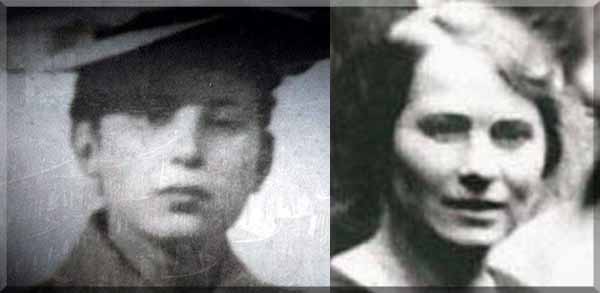Women and Carl Jung: Sabina Spielrein
Spielrein is the person I wrote you about. … She was, of course, systematically planning my seduction, which I considered inopportune. Now she is seeking revenge.
Letter of Jung to Freud, 4 June 1909
.
Sabina Spielrein was Jung’s first patient. In the records at Burgholzli Hospital, Jung (1905) described her as “oriental” and “voluptuous,” and her face as bearing “a sensuous, dreamy expression.” She was nineteen at the time and had been very protected from sexuality and sexual information.
The extent of their relationship was debated for years; there is now is considerable historical evidence (from her diaries that were found in 1977) substantiating an intimate relationship. Sources of this material can be found at the end of this post.
Interesting, Ms. Spielrein was frequently a topic of discussion between Freud and Jung, and no doubt contributed to the early development of psychoanalysis and Jung’s methods. It is also likely that she contributed to the break-up of Freud and Jung.
In my earlier years, my opinion of Jung was lessened because of this allegedly immoral behavior. From the viewpoint of older age, I would consider it more an indiscretion of youth. Additionally, however improper and misguided the sexual intimacy, Ms. Spielrein was transformed (some would say “cured”) by the experience. My guess would be that she did not regret the experience, but rather would have considered it as vital in her development, as something she was grateful to have experienced, in spite of the heartbreak and therapeutic malpractice.
A upcoming film, A Dangerous Method, about Freud and Jung and the development of psychoanalysis, will include her in the film. As someone who thinks Jung had a lot to say, I do have some fears that this film will be biased and people who might have been helped by his theories will be turned off. In the long run, however, I suspect that Jung’s viewpoints will become more influential and more generally accepted.
(I would note that Dr. Spielrein contributed far more to the field of psychology than her early relationship with Jung — she brought psychoanalysis to Russia, she greatly influenced Jean Piaget and Melanie Klein.)
From Jewish Woman: A Comprehensive Encyclopedia
Spielrein’s case appears to be at least part of what motivated Jung to initially contact Freud. Jung had been greatly impressed by some of Freud’s innovative techniques and writings, and applied them to his treatment of Spielrein. Jung wrote to Freud in October 1906 seeking his opinion about a challenging case he had involving a young female Russian student. Spielrein also sought help from Freud, initially requesting a consultation with him in 1909, but Freud declined due to his discussions with Jung about his relationship with Spielrein. Spielrein eventually met Freud in Vienna in October 1911. He was greatly impressed with her.
Source
University of Toronto Quarterly
Volume 72 Number 3,
Summer 2003
Young and unknown doctor Carl Gustav Jung was the doctor in charge of Sabine’s case. Being keen on ideas of Sigmund Freud, he applied methods of the psychoanalyst from Vienna on Sabine for the first time. Jung described success of medical treatment of the young Russian girl with usage of these methods in letters to his friend and teacher. Jung didn’t conceal the fact that Sabine fell in love with him (it is frequent in medical practice when female patients attribute features of a hero, father or God on their doctors). He wrote, the girl “sincerely” told she wanted to give birth to his son whom she wanted to name Siegfried. However, Jung didn’t mention that the “request” of Frau Spielrein was carried out. The liaison between Sabine Spielrein and Carl Gustav Jung lasted for five years. It is believed that these relations turned out to be some kind of a catalyst that speeded up the breakup of relations between the pupil and the teacher. (Source)
Bibliography
Carotenuto, Aldo, and Trombetta, Carlo. (1982). A Secret Symmetry: Sabina Spielrein Between Jung and Freud (Arno Pomerans, John Shepley, and Krishna Winston, Trans.). New York: Pantheon Books. (Original work published 1977)
Kerr, John. (1993) A Most Dangerous Method: The Story of Jung, Freud, and Sabina Spielrein New York: Alfred A. Knopf
Kress-Rosen, Nicolle. (1993). Trois figures de la passion Paris: Arcanes.
Spielrein, Sabina. (1995). Destruction as a Cause of Becoming (S. K. Witt, Trans.). Psychoanalysis and Contemporary Thought, 18, 85-118. (Original work published 1911)
Coline Covington and Barbara Wharton (Editors), Sabina Spielrein: Forgotten Pioneer of Psychoanalysis (Hardcover – Sep 29, 2003)
Additional Links of Interest:
Wikipedia
Answers.com


Well you were right about the Cronenberg-Hampton film portrays Jung in a way that is ” biased and people who might have been helped by his theories will be turned off”. For me the worst parts were the way the film portrays Jung as a self satisfied bourgeois when we know that he came from a poor and troubled background, and the way the ending seemed to imply that he was comfortable with Nazism. The importance of his ideas are not hinted at in the least. Horrible shameful film that does not do any of the principals any justice.
Selina Steilrein had some great ideas i have suspected that the women in my life can not look objectivly at a problem nor can they see their evil intensions lead to all sorts of somatic illness. Including abortion.
If you are not a little crazy you have no Idea about what goes on in the world. Selina’s story is much stranger than fiction. I wonder if her end was her madness.
Its a great movie had no idea who she is. 十
..tho of course Sabina and other women are always the ones to be portrayed in the most biased ways. and Jung was indeed comfortable with nazism.